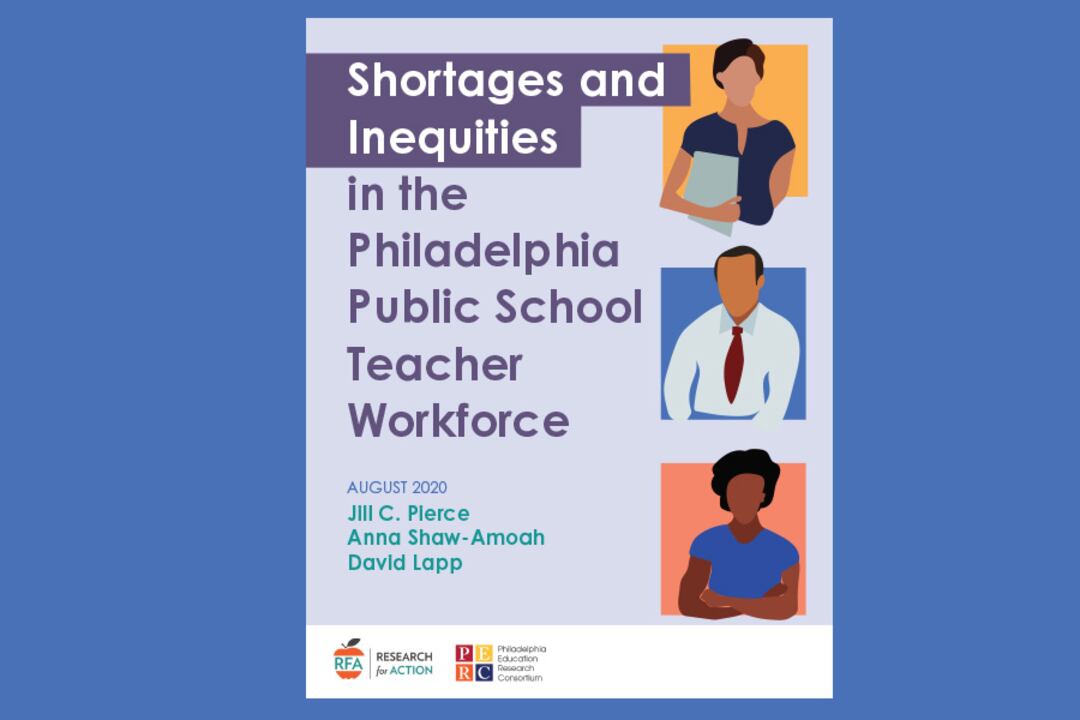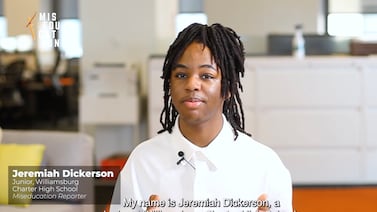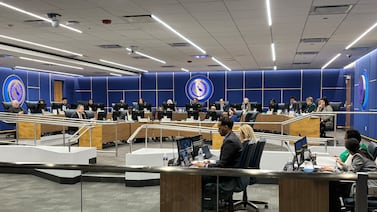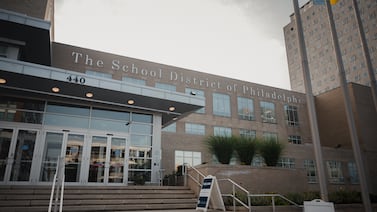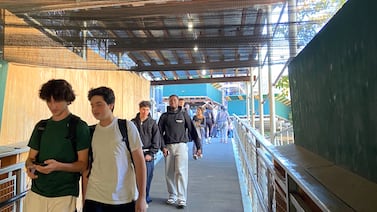A new report says Philadelphia is facing dire teacher shortages in key areas in both public and charter schools, and that more experienced and fully certified teachers are inequitably distributed.
Research for Action, a nearly 30-year-old nonprofit education research organization based in the city, said that Philadelphia has fewer teachers per student than the state and national averages, and would need to hire 1,500 more in both district and charter schools to reach the state average ratio. Statewide, the ratio is one teacher per 15 students; in Philadelphia, it is one per 17 students.
The shortages are driven mostly by funding inequities, the report said, including the state’s failure to reimburse districts for “stranded costs” incurred when students leave the district to attend independently run, publicly funded charter schools.
Citing earlier RFA research, the report said that even as enrollment declines, “districts are not able to maintain services, including student/staffing ratios, while implementing budget cuts needed to accommodate the new costs districts must pay to charter schools.”
The fully certified teacher shortages are most acute in special education, high school math, and middle school math, English, and science. And while student enrollment has been declining in the district, the number of teachers has declined at a faster rate.
Larisa Shambaugh, the district’s chief talent officer, said in an interview that the issues raised in the report are valid and a matter of concern for the district, which is working hard on recruitment, retention, and reducing turnover. Some of the older data, for instance, on the percentage of teachers who are not fully certified, has improved, although she did not have the latest figures handy.
“We live and breathe the belief that our teaching workforce in the district is what is the key to success for our students,” she said.
This year, she said, the district hired about 600 new teachers and has filled more than 99% of its vacancies. On the issue that the district should have more teachers to reduce class size, Shamburgh said that “we don’t staff by teacher/student ratio, but by class size needs.” Under the teachers’ contract, classes can be up to 30 in grades K-3 and 33 for higher grades, but the actual class size is “well below that,” although she did not have specifics on hand.
The report also found that, as recently as 2016, up to a quarter of math classes are taught by teachers who are not fully certified in the field, and that in the 70 schools, both district and charter, where at least 96 percent of the students are black and Hispanic, the figure is 39 percent.
The district “is increasingly relying on emergency teaching permits,” the report concluded.
While she didn’t offer current numbers on emergency permits, Shambaugh pointed out that not being fully certified doesn’t necessarily mean a teacher isn’t qualified. Many in Philadelphia are second career teachers who have advanced degrees in their fields but lack courses in pedagogy. The district has started a teacher residency program with Drexel University that this year produced 67 teachers, most of color, in STEM subjects and Spanish.
Shortages in specific content areas, including science, math, and special education, “is a national issue,” she said. This year, the district started a program offering high school teachers $10,000 in tuition help toward obtaining a joint certification in special education, she said.
While Philadelphia has “among the most diverse teaching forces in the state,” the report notes that “Philadelphia’s students are far more diverse in terms of race and ethnicity than those who teach them.” While 31% of the city’s teachers are people of color, 86% of the students are Black or Hispanic. Nearly two-thirds of all the teachers of color in Pennsylvania work in Philadelphia.
Only 6 percent of the state’s teachers are people of color, compared to a third of the students. Shambaugh noted that to increase teacher diversity, “we can’t solely rely on the teacher preparation pipeline in Pennsylvania, which is very white.”
The number of students seeking and completing teaching degrees in Pennsylvania has plummeted in the past decade. Nationally, enrollment in teacher preparation programs has fallen by 34 percent, but in Pennsylvania, the plunge is 67 percent, from nearly 40,000 in 2008-09 to just over 13,200 in 2017-18.
As the overall numbers declined, the proportion of teacher candidates who are Black or Hispanic shrank. In Pennsylvania’s teacher preparation programs, 6% are Black and 4% are Hispanic, “well below” national averages of 11% and 16%, respectively.
Compared to most surrounding suburban districts, Philadelphia’s teachers — once the highest-paid in the area, have fallen behind. In Lower Merion, for instance, the average salary is just under $102,000. In Philadelphia, it is $72,500.
The contract with the Philadelphia Federation of Teachers expires on Aug. 31, and while salary is expected to be a big issue, the district is forecasting an $800 million deficit by 2025 without additional revenue. It had brought its budget nearly into structural balance before the coronavirus, but forecasts now show state and city revenue declining precipitously while pandemic-related expenses are adding to the district’s bottom line.
“Many of the barriers and challenges to improving recruitment and retention of a qualified, more diverse teaching force are endemic to the structural inequity within which the Philadelphia school system operates,” the report said. “Efforts to eliminate broader inequity may prove the most effective long-term strategy for strengthening the teacher workforce in the city.”

